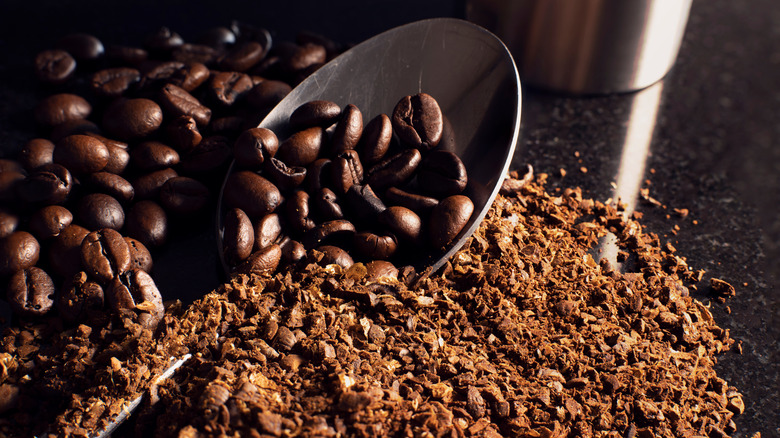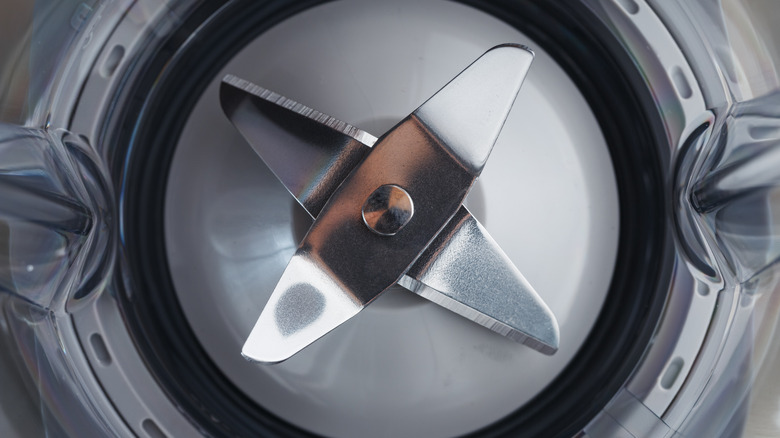Why You Should Think Twice About Putting Coffee Beans In The Blender
If you own a blender, you've probably experimented with blending all types of foods. There are, however, some foods you should avoid putting in your blender.
Most people use the store's coffee bean grinder or an at-home grinder to crush their coffee beans. It has been said that freshly ground coffee tastes better than pre-ground and packaged coffee, but why?
According to Home Grounds, there are compounds in coffee that are not stable. When they are compromised, it affects the flavor of your java. The three elements affecting the taste of coffee are oxidation, CO2 depletion, and moisture. Freshly ground coffee is especially susceptible to losing its bold, rich flavor, especially if the beans are ground too far in advance. You may be tempted to blend that bag of coffee beans if you don't have a grinder, but think twice! Here's why:
Coffee beans dull blender blades
Coffee beans are better placed in a coffee grinder than in a blender, according to Eating Well. Technically, you can put your caffeinated beans in a blender, but over time, the "blending" will wear down the sharpness of the blades. Tossing your beans into a blender will also produce an uneven grind, causing irregular-sized coffee pieces rather than a smooth, ground blend (via Southern Living).
According to Drinks Without Broders, if you are desperate for a cup of joe and don't have a coffee grinder, you can crush the beans in a blender. The site recommends only placing a few beans in at a time. Otherwise, you will end up with a combination of whole beans and roughly ground beans, and who can brew coffee like that?
Next time you need to grind coffee beans, take them to the store or invest in a coffee grinder; leave the blender for the espresso milkshakes instead.

